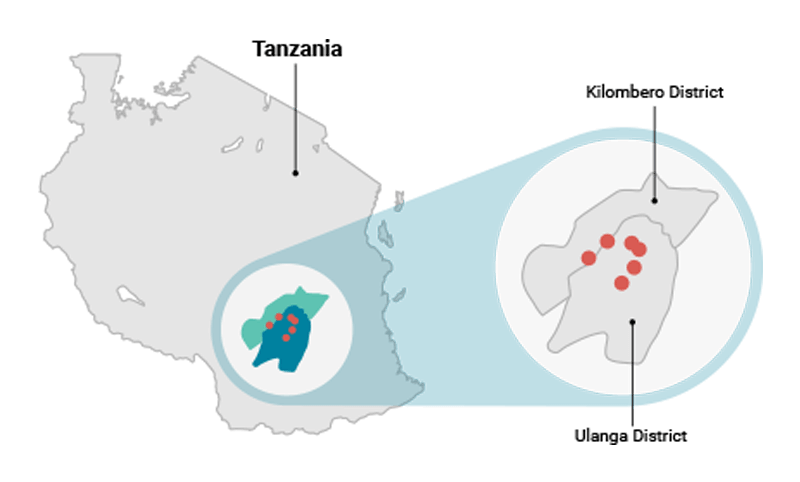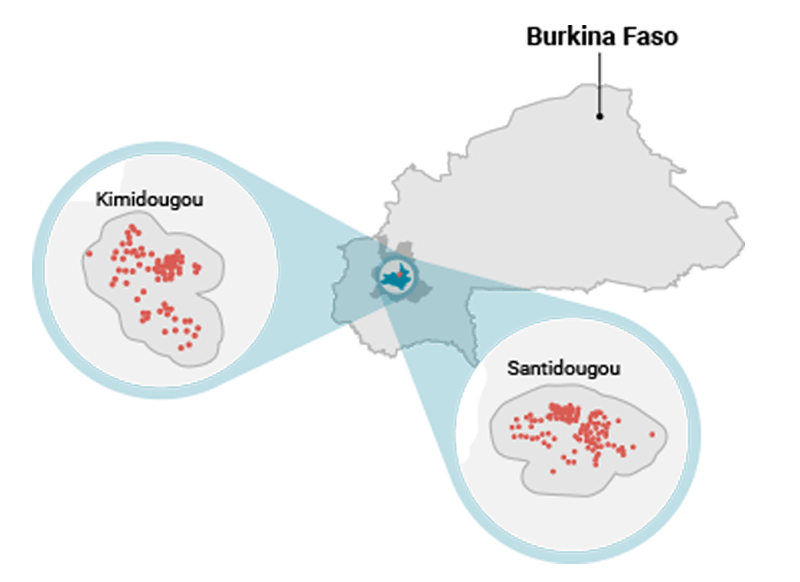Research Sites
Tanzania study sites
In the Ulanga District, the study was carried out in three rural villages, Kivukoni, Minepa and Lupiro, mostly inhabited by rice farmers. Mosquito density is fairly high throughout the year, peaking between January and May (Ngowo et al., 2017). The primary malaria vector species in the region are Anopheles arabiensis and An. funestus, with An. funestus responsible for most transmission (Kaindoa et al. 2017).
In the Kilombero District, sampling took place in three rural villages, Idete, Ihenga and Kining’ina, and three urban villages, Katindiuka, Ifakara Mjini and Viwanja Stini, which are in or around the town of Ifakara. The rural villagers are mostly pastoralists who also practise small-scale farming. The urban villagers mostly run small businesses but migrate to rice farms in the Ulanga District during the farming season. Mosquito densities in the urban area are low, with considerably lower risk of malaria transmission than 15 years ago.

Burkina Faso study sites
The two villages in Bobo Dioulasso, Kimidougou (700 people) and Santidougou (1000 people) occur in the western part of Burkina Faso. With similar environmental characteristics, both receive an average of about 1200 mm annual rainfall between May and October, and both are dominated by wooded savanna.


